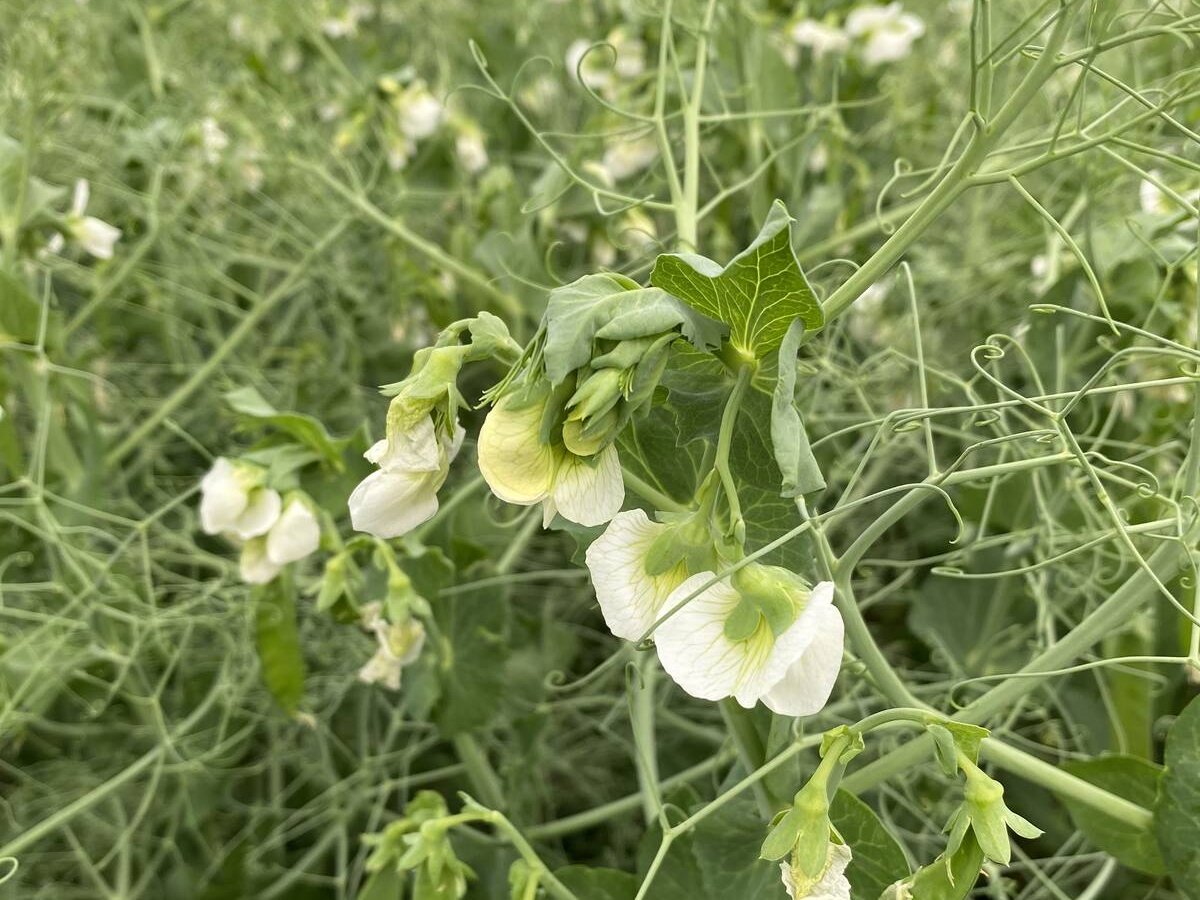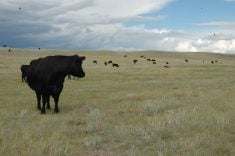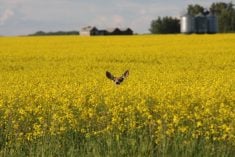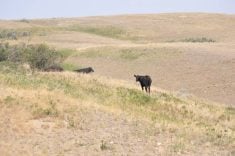THURSO, Que. – On a wind-swept, sunny day, surrounded by hardwood hills flaunting their first traces of autumn color, Quebec dairy farmer Jean-Claude Brunet stands among his cows, sounding more like a missionary than a farmer.
His mission is nothing less than trying to save from extinction Canada’s contribution to the dairy world, the Canadienne breed of dairy cow.
The 70-head herd of fullblood Canadienne cattle he has built in the past two years represents between a third and half of the estimated world population of this historic breed – the only dairy breed ever developed in North America.
Read Also

India slaps 30 per cent import duty on yellow peas
India has imposed a 30 per cent duty on yellow pea imports with a bill of lading date on or after Nov. 1, 2025.
“If anything happened to my herd, the breed would disappear,” he says matter-of-factly. “I’m sure of that. There would be too few, too small a pool. I hope I am around long enough to see the breed secure.”
Focus on farming
In August, Brunet took an early retirement buyout from the federal government, where he had worked as a base manager for annual scientific excursions to the Arctic. Now, at age 48, he has become a full-time farmer.
“I’d say it is 25 percent for the farming and 75 percent to save the Canadienne,” he said.
His interest in the breed developed after his son heard about Canadiennes at agricultural school.
In many ways, Brunet operates a typical dairy farm, selling milk from his 30 milking cows to pay the bills.
A small flock of sheep wanders the hills of the 100-acre farm he purchased two years ago. He has five horses for breeding, a few pigs for meat and some geese in pens.
He grows hay on his land and the 155 acres he rents for cropping and pasture. In winter, he buys feed to supplement the hay.
It is an older farm, a bit rundown: “I have lots of work to do, I know.”
But so far, the priority has been to find the cattle, searching newspapers, cattle magazines and the internet for leads, usually in Quebec. Sometimes, though, the search has stretched across Canada.
This summer, Brunet’s brother saw a television report about the Wilding Heritage Farm in Cowichan Bay, B.C. The farm population included what the reporter said was the only fullblood Canadienne cow in British Columbia.
Within days, Brunet had contacted the CBC to get an address, reached Nick Osborne at Wilding Heritage Farm, determined that Petale was fullblood by making his regular check of the pedigree papers nine generations back and made arrangements to purchase and fly the cow east.
On this day Petale is being anti-social, standing alone as if still trying to figure out how a B.C. cow can integrate into a Quebec herd.
The common link will be her ancient Quebec roots.
Farmer Brunet becomes the historian, quickly describing the link.
All Canadienne cows descend from cattle brought to New France (now Quebec) by explorer Jacques Cartier and the settlers who followed him to the first permanent French settlement along the St. Lawrence River in 1541.
The originals were a cross between two predominant French breeds of the day, the Bretonne and the Normande.
By being isolated in the distant colony, the cattle developed their distinctive characteristics, including the ability to withstand harsh winter conditions and to reliably give milk even when feed rations were scarce or inferior.
The Canadienne came to dominate the Quebec farm scene of the 16th to 19th centuries. They were reliable, hardy and gave milk high in protein and butterfat.
But by the latter years of the 19th century, other high-yielding English and European breeds had been introduced to Quebec and the Canadienne began to lose favor.
Over the years, as Holsteins became the dominant dairy breed, Canadienne cows were slaughtered or cross-bred to try to increase their size and production.
Some cross-bred
The last great assault on the genetic purity of the herd came in the 1970s when the Quebec government introduced Brown Swiss to cross-breed.
Sheila Daunt, senior interpreter at Ottawa’s Agriculture Museum, says the breed has been added to the endangered species list. Although there are several thousand Canadienne cattle, most are not genetically pure.
“I would say there are no more than 250 fullbloods left and no more than 100 breeding females,” she said. “They are the first and only breed of dairy cattle to develop in North America and we have almost lost them.”
Not if Brunet has his wish. He wants to save them, not only for their link to Canada’s history but because he sees them as a viable dairy cow, despite lower milk production.
“Their milk is rich,” he said. “I know when I started two years ago, I had to prove myself. My neighbors laughed. Now, when they see the milk truck come, maybe the laughter is dying down.”
He says the image of the Canadienne has been tarnished over the years by “propaganda” from advocates of the other breeds.
He hints darkly about conspiracies and falsified records in the past to hide the fact that Canadienne cattle have fared well in cattle shows when judged against other breeds.
“It’s funny, this skepticism,” he said. “The cow has proven herself for 400 years. She will again.”














